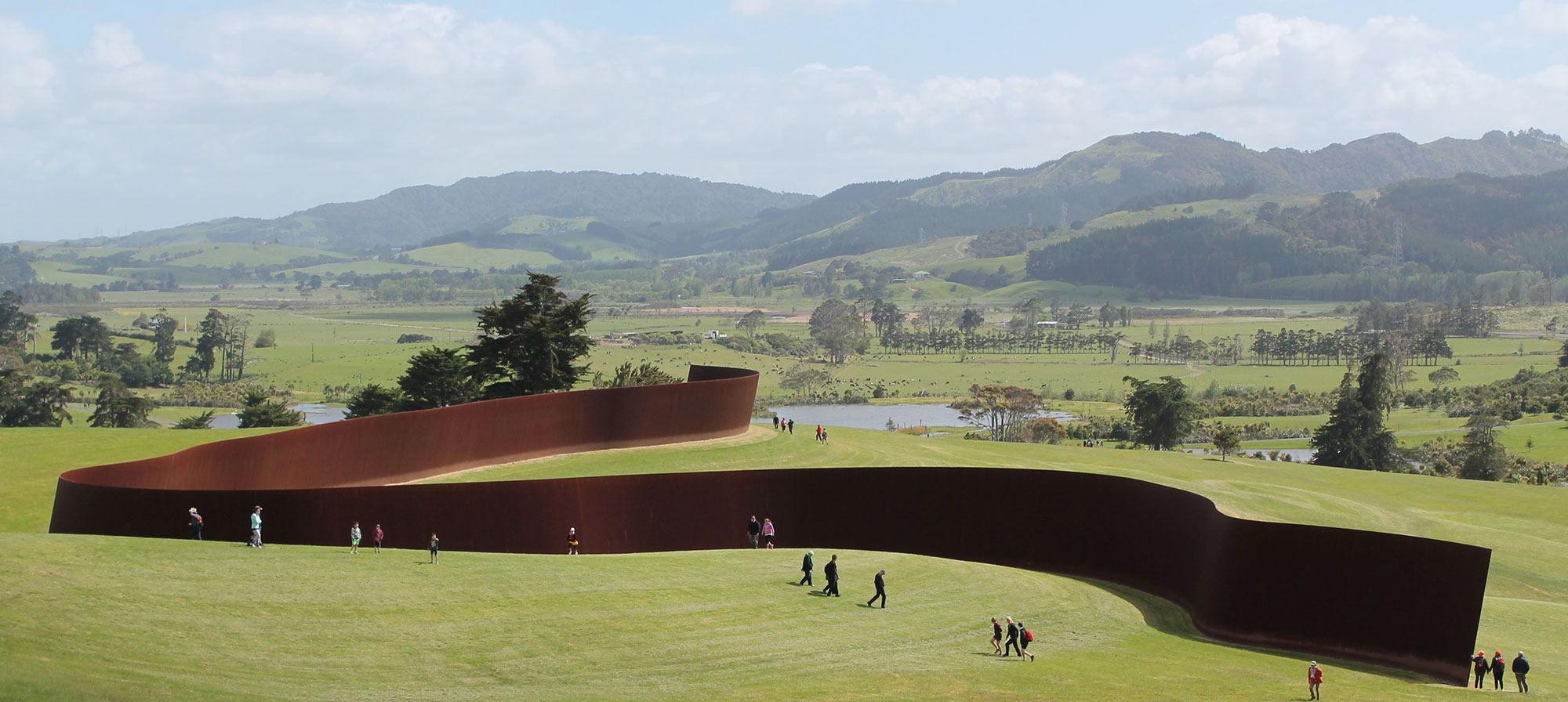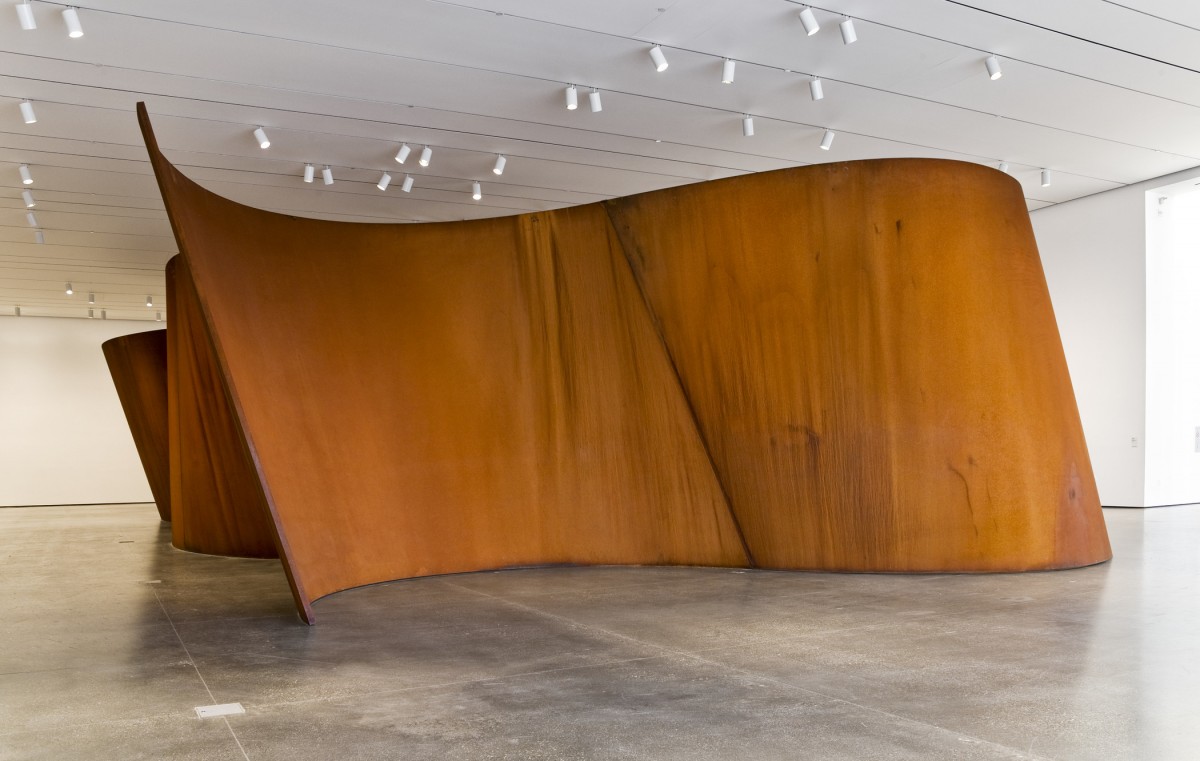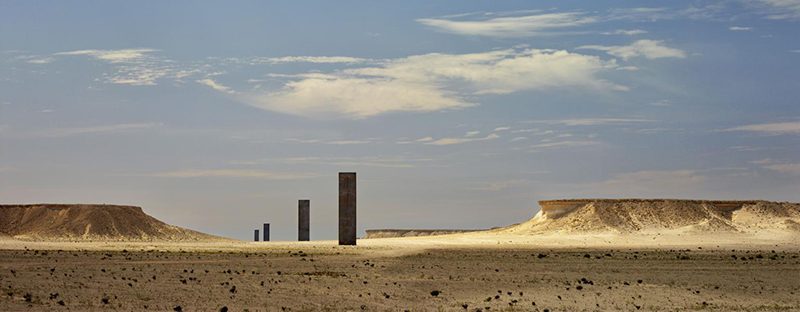TRACES: Richard Serra
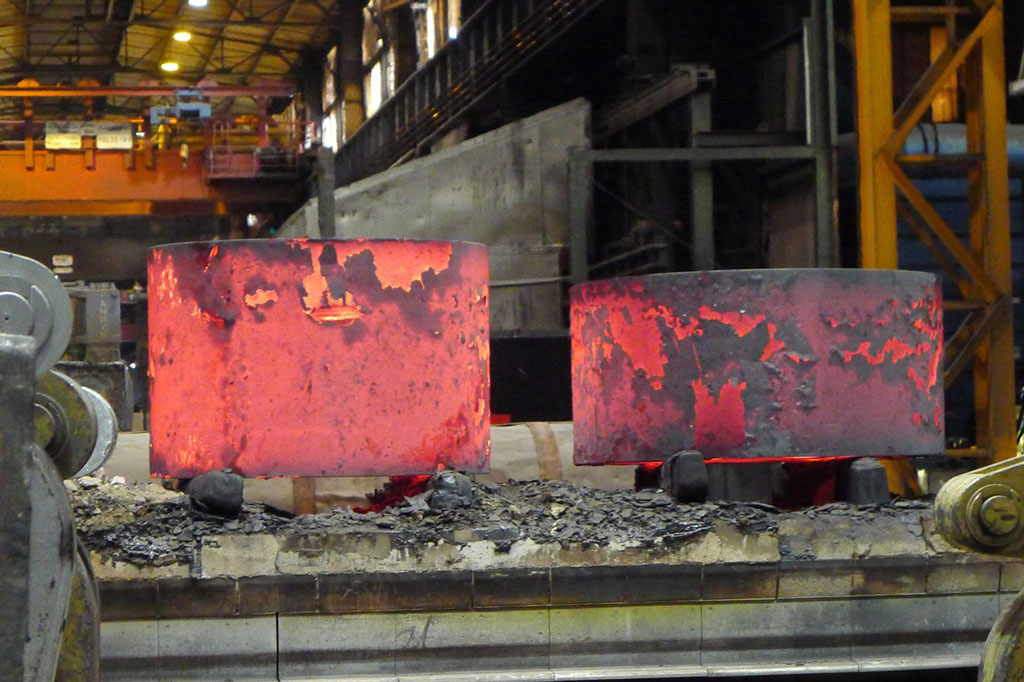 Today is the occasion to bear in mind the American minimalist sculptor Richard Serra, (2/11/1939-26/3/2024), who is best known for his large-scale abstract steel sculptures, which emphasizes materiality and an engagement between the viewer, the site, and the work. His work has played a major role in advancing the tradition of modern abstract sculpture in the aftermath of Minimalism. Yet his sculptures still evoke a sense of the sublime through their sheer scale and materiality. This column is a tribute to artists, living or dead, who have left their mark in Contemporary Art. Through documents or interviews, starting with: moments and memories, we reveal out from the past-unknown sides of big personalities, who left their indelible traces in time and history…
Today is the occasion to bear in mind the American minimalist sculptor Richard Serra, (2/11/1939-26/3/2024), who is best known for his large-scale abstract steel sculptures, which emphasizes materiality and an engagement between the viewer, the site, and the work. His work has played a major role in advancing the tradition of modern abstract sculpture in the aftermath of Minimalism. Yet his sculptures still evoke a sense of the sublime through their sheer scale and materiality. This column is a tribute to artists, living or dead, who have left their mark in Contemporary Art. Through documents or interviews, starting with: moments and memories, we reveal out from the past-unknown sides of big personalities, who left their indelible traces in time and history…
By Dimitris Lempesis
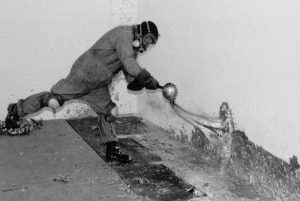 According to Serra, the foundations of his work took shape on his fourth birthday, during the launch of an oil tanker at the Marine Shipyard in San Francisco, “All the raw material I needed is contained in the reserve of this memory”. Serra earned a Bachelor’s degree in English literature in 1961 from the University of California at Santa Barbara. He had supported himself during his studies by working at a steel mill, an occupation that would come to inform his later work as an artist. The years 1957-61 Serra studied at the University of California at Berkeley and at Santa Barbara. To support himself, Serra worked part-time at a steel mill, which was to have a strong influence on his later work. The period 1961-64, he studied painting at the Yale University School of Art and Architecture. During his years at Yale the worked and studied with Philip Guston, Ad Reinhardt, Robert Rauschenberg, Nancy Graves (his first wife), Frank Stella, and Chuck Close, among others. Supported by fellowships, he spent time in France, where he spent a great deal of time drawing near a reconstruction of Brancusi’s studio and Italy where he began painting a series of grids in random colors. He later learned that Ellsworth Kelly was painting in a similar style, so Serra abandoned the technique. In 1966 he moved to New York. There he met other future Minimalists and Environmental Artists such as: Eva Hesse, Carl Andre, Donald Judd, Bruce Nauman, Steve Reich, Robert Smithson, and Michael Snow. In New York, he began making his first sculptures out of rubber-said to have been inspired by the horizontal progression in Jackson Pollock’s painting. In 1968 Richard Serra made his piece titled “Splashing” by throwing molten lead in the corner where the floor meets the wall in the warehouse of the art dealer Leo Castelli. In a later version, called “Casting”, Serra used a greater amount of lead, so the forms created by subsequent executions of this activity could be removed from the wall and placed in a row on the floor. “Casting” was exhibited at the Whitney Museum of American Art in the exhibition “Anti-Illusion: Processes and Materials” in 1969. At about this same time Serra wrote his now famous “Verb List”, which comprises more than one hundred different processes that could be done to or with a given material. “Verb List” was published in 1972 in the book “The New Avant-Garde: Issues for the Art of the Seventies”. The following “Prop” series, which Serra began in 1969, are perhaps also the beginnings of Serra’s recall of his childhood memories of the oil tanker skimming the surface of the ocean. The “Props” were constructed by such techniques as pinning a sheet of steel to the wall with a rolled lead pipe and leaning steel sheets against each other in configurations that were held together by gravity alone. In 1970, Serra assisted friend and artist Robert Smithson in the latter’s execution of the Environmental work, “Spiral Jetty”. Serra’s exposure to Environmental art in this instance reinforced the idea of site-specificity, or the phenomenon of a work of art being conceived and executed as an integral part of its surroundings. He began creating large-scale sculptures of rolled steel plates and curved slabs that were designed for specific sites. Serra’s interest in place and the way an object can shape the space around it made him a popular artist for public art commissions. Serra also experimented with video art as early as the late 1960s, producing his first of many video art films. In “Hand Catching Lead”, features the artist repeatedly trying to catch pieces of lead falling from the top of the frame. During his early years in New York, Serra collaborated in performances and installations with Yvonne Rainer, Stephen Reich, and Joan Jonas. Serra’s first large commissions were mostly realized outside USA. Like: “Shift”, that was commissioned in 1970 by the art collector Roger Davidson and installed on his family property in Ontario, “Spin Out” in the Kröller-Müller Museum and “Elevation Circles: In and Out”, that was installed at Schlosspark Haus Weitmar. Serra has since participated in Documentas 5, 6 , 7 and 8 , the Venice Biennales of 1984 and 2001, and the Whitney Museum of American Art’s Annual and Biennial exhibitions of 1968, 1970, 1973, 1977, 1979, 1981, and 1995. For documenta VI (1977), Serra designed “Terminal”, four trapezoids that form a tower, situated in front of the main exhibition venue. After long negotiations, accompanied by violent protests, Terminal was purchased by the city of Bochum and finally installed at the city’s train station in 1979. In 1981, Serra installed “Tilted Arc”, a gently curved, 3,5 meter high arc of rusting mild steel in the Federal Plaza in New York City. The work was commissioned by the United States General Services Administration Arts-in-Architecture program for the Foley Federal Plaza. However, after much debate, it was removed in 1989 following a lawsuit. Serra continued to produce large-scale steel structures for sites throughout the world, and became particularly renowned for his monumental arcs, spirals, and ellipses, which engage the viewer in an altered experience of space. He was invited to create a number of artworks in France: “Philibert et Marguerite”, “Threats of Hell”, “Octagon for Saint Eloi” and “Elevations for L’Allée de la Mormaire in Grosrouvre”. Alongside those works, Serra designed a series of forged pieces including: “Two Forged Rounds for Buster Keaton”, “Snake Eyes and Boxcars” and “Ali-Frazier” and “Charlie Brown” One of his biggest installation is “The Matter of Time” commissioned by the Museo Guggenheim Bilbao, it incorporates a series of seven sculptures made of spot-welded sheets of steel that form 4,3 m high curling walls positioned around the existing sculpture, “Snake”, that had been commissioned for the museum’s opening in 1997. Arranged to move the viewer through them and through the space surrounding them, the installation comprises the following pieces: “Torqued Spiral (Closed Open Closed Open Closed)”, “Torqued Ellipse”, “Double Torqued Ellipse”, “Torqued Spiral (Right Left)”, “Torqued Spiral (Open Left Closed Right)”, “Between the Torus and the Sphere” and “Blind Spot Reversed”. The installation “Promenade”, a series of five colossal steel sheets placed at 30m intervals through in the Grand Palais as part of the Monumenta exhibition. Serra was the second artist, after Anselm Kiefer, to be invited to fill the 13,500 m² nave of the Grand Palais with works created specially for the event. In 2011, Serra unveiled his sculpture “7” in Doha, Qatar. The sculpture, located at an artificial plaza in Doha harbor. The sculpture was commissioned by the Qatar Museums Authority and took one year to be built. In March 2014, Serra’s “East-West/West-East”, a site-specific sculpture located at a remote desert location stretching more than a half-mile through Qatar’s Ras Brouq nature reserve, was unveiled. Serra is widely considered one of the most influential sculptors of the late 20th century. Serra’s interest in painting, sculpture, music, dance, film, performance, and installation art has affected legions of artists during his long career. Architects and urban planners today often cite Serra’s influence, which the artist scorns in keeping with his belief that true art is never utilitarian. Richard Serra died of pneumonia at his home in New York on March 26, 2024.
According to Serra, the foundations of his work took shape on his fourth birthday, during the launch of an oil tanker at the Marine Shipyard in San Francisco, “All the raw material I needed is contained in the reserve of this memory”. Serra earned a Bachelor’s degree in English literature in 1961 from the University of California at Santa Barbara. He had supported himself during his studies by working at a steel mill, an occupation that would come to inform his later work as an artist. The years 1957-61 Serra studied at the University of California at Berkeley and at Santa Barbara. To support himself, Serra worked part-time at a steel mill, which was to have a strong influence on his later work. The period 1961-64, he studied painting at the Yale University School of Art and Architecture. During his years at Yale the worked and studied with Philip Guston, Ad Reinhardt, Robert Rauschenberg, Nancy Graves (his first wife), Frank Stella, and Chuck Close, among others. Supported by fellowships, he spent time in France, where he spent a great deal of time drawing near a reconstruction of Brancusi’s studio and Italy where he began painting a series of grids in random colors. He later learned that Ellsworth Kelly was painting in a similar style, so Serra abandoned the technique. In 1966 he moved to New York. There he met other future Minimalists and Environmental Artists such as: Eva Hesse, Carl Andre, Donald Judd, Bruce Nauman, Steve Reich, Robert Smithson, and Michael Snow. In New York, he began making his first sculptures out of rubber-said to have been inspired by the horizontal progression in Jackson Pollock’s painting. In 1968 Richard Serra made his piece titled “Splashing” by throwing molten lead in the corner where the floor meets the wall in the warehouse of the art dealer Leo Castelli. In a later version, called “Casting”, Serra used a greater amount of lead, so the forms created by subsequent executions of this activity could be removed from the wall and placed in a row on the floor. “Casting” was exhibited at the Whitney Museum of American Art in the exhibition “Anti-Illusion: Processes and Materials” in 1969. At about this same time Serra wrote his now famous “Verb List”, which comprises more than one hundred different processes that could be done to or with a given material. “Verb List” was published in 1972 in the book “The New Avant-Garde: Issues for the Art of the Seventies”. The following “Prop” series, which Serra began in 1969, are perhaps also the beginnings of Serra’s recall of his childhood memories of the oil tanker skimming the surface of the ocean. The “Props” were constructed by such techniques as pinning a sheet of steel to the wall with a rolled lead pipe and leaning steel sheets against each other in configurations that were held together by gravity alone. In 1970, Serra assisted friend and artist Robert Smithson in the latter’s execution of the Environmental work, “Spiral Jetty”. Serra’s exposure to Environmental art in this instance reinforced the idea of site-specificity, or the phenomenon of a work of art being conceived and executed as an integral part of its surroundings. He began creating large-scale sculptures of rolled steel plates and curved slabs that were designed for specific sites. Serra’s interest in place and the way an object can shape the space around it made him a popular artist for public art commissions. Serra also experimented with video art as early as the late 1960s, producing his first of many video art films. In “Hand Catching Lead”, features the artist repeatedly trying to catch pieces of lead falling from the top of the frame. During his early years in New York, Serra collaborated in performances and installations with Yvonne Rainer, Stephen Reich, and Joan Jonas. Serra’s first large commissions were mostly realized outside USA. Like: “Shift”, that was commissioned in 1970 by the art collector Roger Davidson and installed on his family property in Ontario, “Spin Out” in the Kröller-Müller Museum and “Elevation Circles: In and Out”, that was installed at Schlosspark Haus Weitmar. Serra has since participated in Documentas 5, 6 , 7 and 8 , the Venice Biennales of 1984 and 2001, and the Whitney Museum of American Art’s Annual and Biennial exhibitions of 1968, 1970, 1973, 1977, 1979, 1981, and 1995. For documenta VI (1977), Serra designed “Terminal”, four trapezoids that form a tower, situated in front of the main exhibition venue. After long negotiations, accompanied by violent protests, Terminal was purchased by the city of Bochum and finally installed at the city’s train station in 1979. In 1981, Serra installed “Tilted Arc”, a gently curved, 3,5 meter high arc of rusting mild steel in the Federal Plaza in New York City. The work was commissioned by the United States General Services Administration Arts-in-Architecture program for the Foley Federal Plaza. However, after much debate, it was removed in 1989 following a lawsuit. Serra continued to produce large-scale steel structures for sites throughout the world, and became particularly renowned for his monumental arcs, spirals, and ellipses, which engage the viewer in an altered experience of space. He was invited to create a number of artworks in France: “Philibert et Marguerite”, “Threats of Hell”, “Octagon for Saint Eloi” and “Elevations for L’Allée de la Mormaire in Grosrouvre”. Alongside those works, Serra designed a series of forged pieces including: “Two Forged Rounds for Buster Keaton”, “Snake Eyes and Boxcars” and “Ali-Frazier” and “Charlie Brown” One of his biggest installation is “The Matter of Time” commissioned by the Museo Guggenheim Bilbao, it incorporates a series of seven sculptures made of spot-welded sheets of steel that form 4,3 m high curling walls positioned around the existing sculpture, “Snake”, that had been commissioned for the museum’s opening in 1997. Arranged to move the viewer through them and through the space surrounding them, the installation comprises the following pieces: “Torqued Spiral (Closed Open Closed Open Closed)”, “Torqued Ellipse”, “Double Torqued Ellipse”, “Torqued Spiral (Right Left)”, “Torqued Spiral (Open Left Closed Right)”, “Between the Torus and the Sphere” and “Blind Spot Reversed”. The installation “Promenade”, a series of five colossal steel sheets placed at 30m intervals through in the Grand Palais as part of the Monumenta exhibition. Serra was the second artist, after Anselm Kiefer, to be invited to fill the 13,500 m² nave of the Grand Palais with works created specially for the event. In 2011, Serra unveiled his sculpture “7” in Doha, Qatar. The sculpture, located at an artificial plaza in Doha harbor. The sculpture was commissioned by the Qatar Museums Authority and took one year to be built. In March 2014, Serra’s “East-West/West-East”, a site-specific sculpture located at a remote desert location stretching more than a half-mile through Qatar’s Ras Brouq nature reserve, was unveiled. Serra is widely considered one of the most influential sculptors of the late 20th century. Serra’s interest in painting, sculpture, music, dance, film, performance, and installation art has affected legions of artists during his long career. Architects and urban planners today often cite Serra’s influence, which the artist scorns in keeping with his belief that true art is never utilitarian. Richard Serra died of pneumonia at his home in New York on March 26, 2024.
